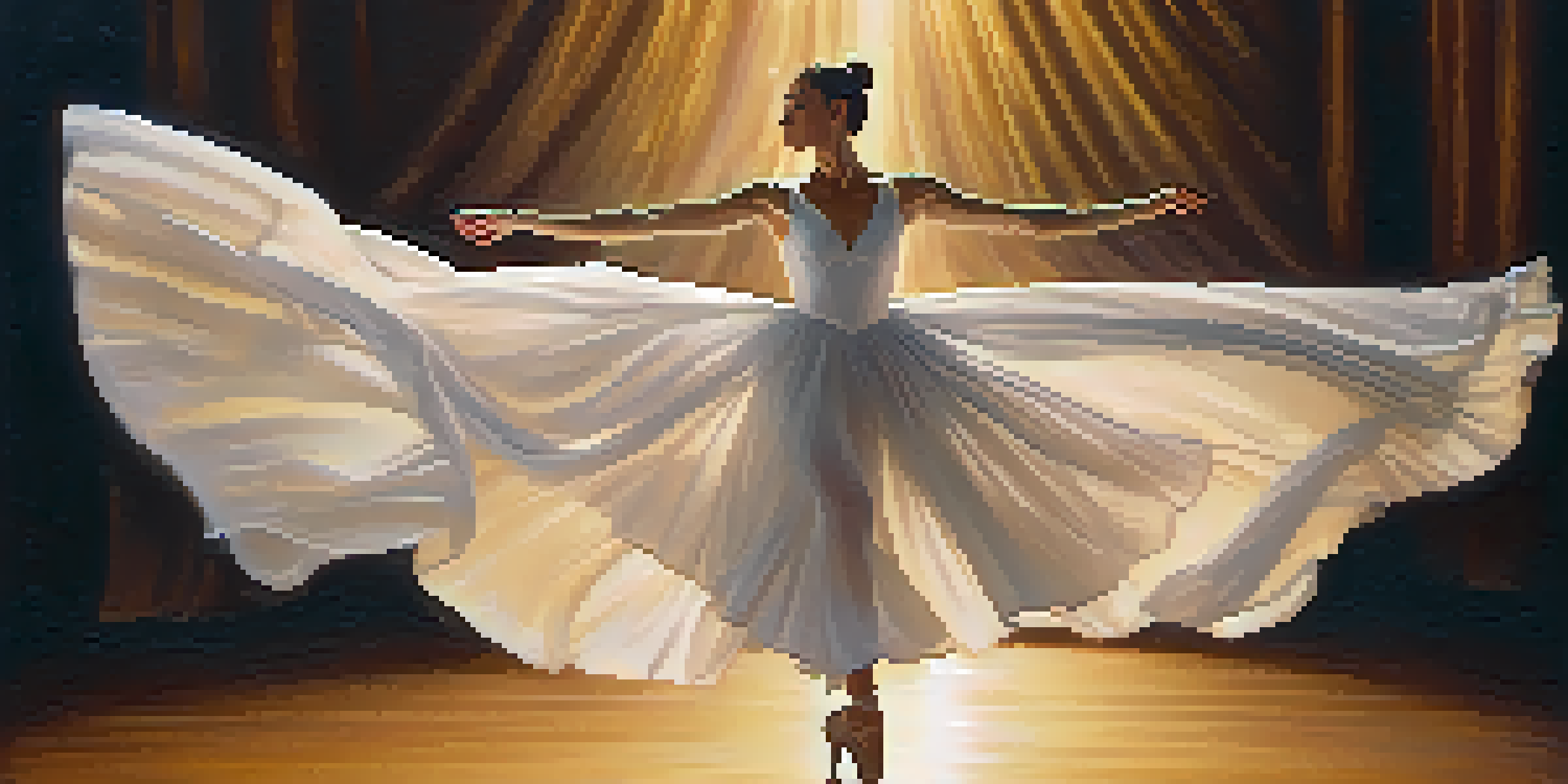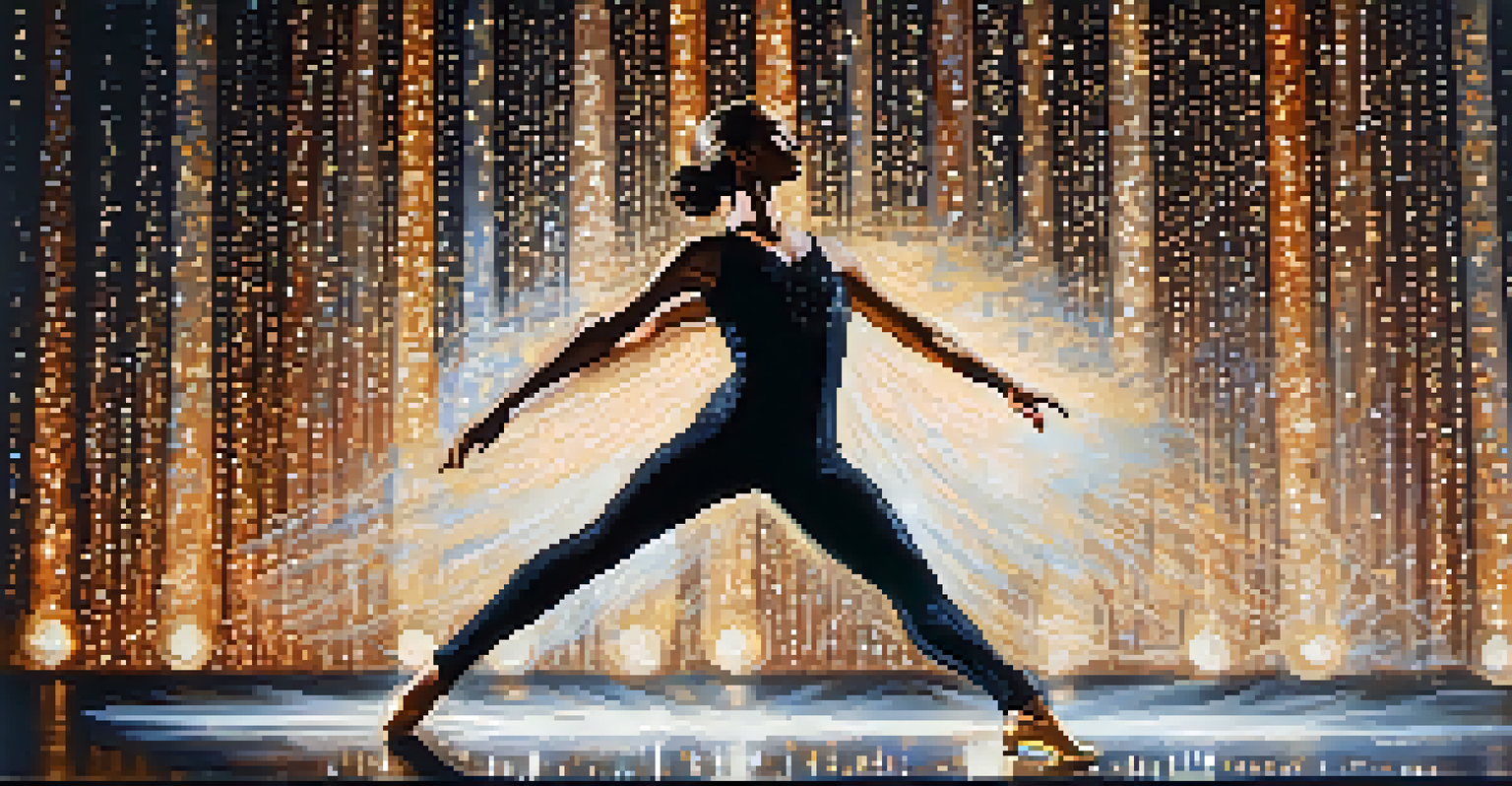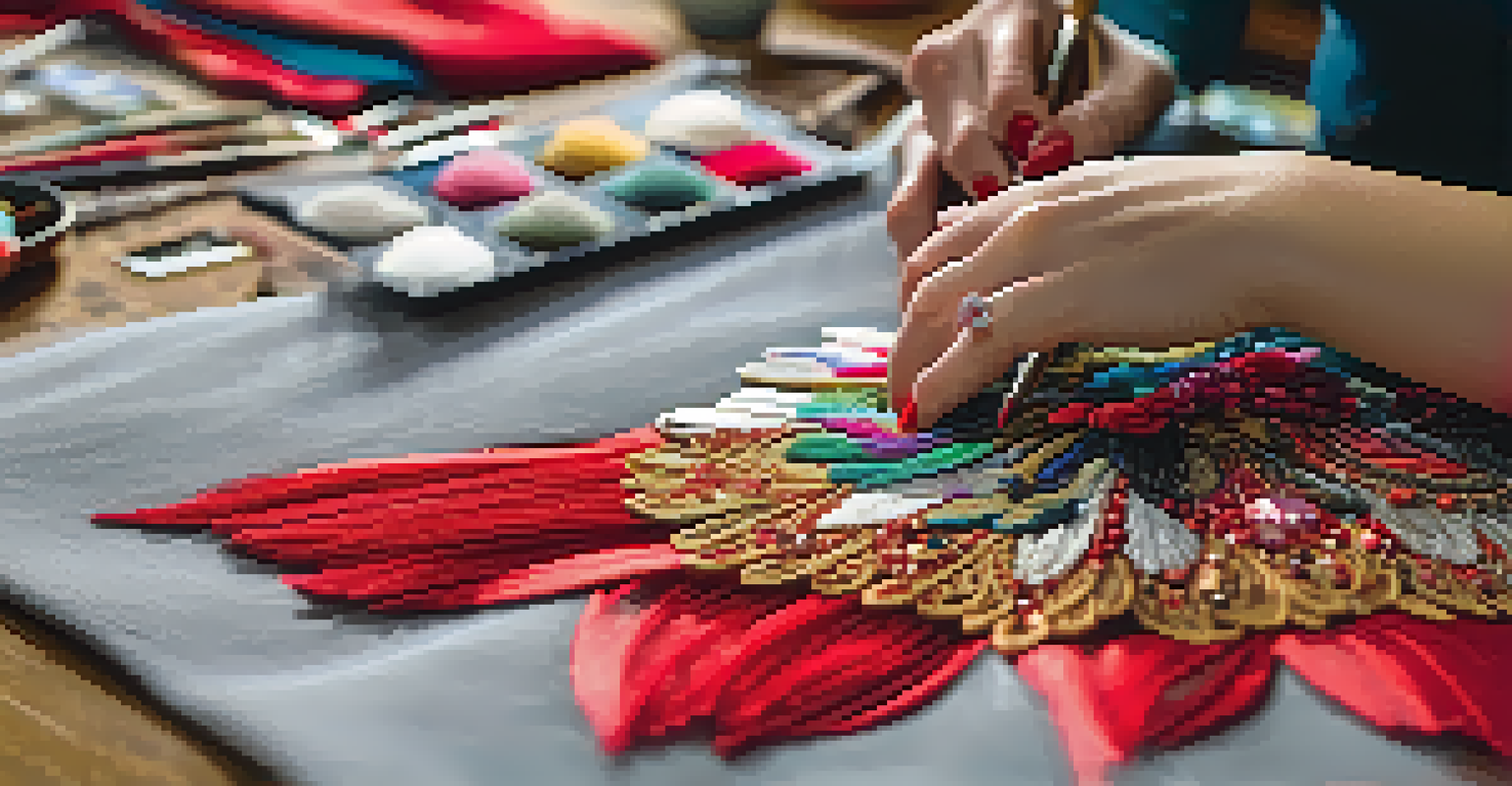Balancing Aesthetics and Functionality in Dance Costumes

Understanding the Importance of Dance Costumes
Dance costumes play a crucial role in performances, serving not just as attire but as a vital element of storytelling. They help convey the mood, theme, and character of the dance, making them an integral part of the overall production. Without the right costume, even the most skilled dancers might struggle to connect with the audience, as visuals are a powerful part of dance.
Dance is the hidden language of the soul.
Additionally, costumes can enhance the dancer's movements, highlighting their skills and artistry. A well-designed costume can accentuate the grace of a pirouette or the power of a leap, creating a mesmerizing visual experience. Thus, understanding the dual role of dance costumes is essential for any choreographer or designer.
Ultimately, the balance between aesthetics and functionality is key, ensuring that costumes not only look good but also support the dancer's performance. This balance is what transforms a good performance into a great one, captivating the audience from start to finish.
Aesthetics: Making a Statement with Dance Costumes
Aesthetics in dance costumes encompass color, design, and fabric choices that create a striking visual impact. The right color palette can evoke emotions and set the tone for the entire performance, while unique designs can draw the audience's attention. For instance, a vibrant red dress can symbolize passion and energy, while softer pastels might convey delicacy and grace.

Moreover, the choice of fabrics plays a significant role in achieving the desired aesthetic. Flowing materials like chiffon can create ethereal movements, while sequined fabrics can add drama and sparkle under stage lights. Designers often experiment with various textures and patterns to craft costumes that not only look good but also enhance the overall theme of the performance.
Costumes Enhance Dance Storytelling
Dance costumes are essential for conveying the mood and character of a performance, making them key to engaging the audience.
However, chasing aesthetics alone can lead to challenges. A stunning costume that restricts movement can hinder a dancer's performance, making it crucial to find that perfect balance where style meets functionality.
Functionality: Ensuring Comfort and Ease of Movement
Functionality in dance costumes is about enabling dancers to perform at their best without restrictions. Comfort is paramount; dancers need to feel free to express themselves through movement. A costume that binds or rubs can distract from the performance, so selecting the right materials and designs is essential to maintain ease of movement.
Costume is a major part of the visual storytelling in dance.
Designers often incorporate elements like stretch fabrics, adjustable straps, and breathable materials to enhance functionality. For example, a leotard with a built-in bra can provide support while allowing for fluid motion, ensuring that the dancer can focus on their performance instead of their attire. This practical approach can lead to more confident and expressive dancing.
Additionally, considering the different styles of dance is vital when designing costumes. Ballet, contemporary, and hip-hop have unique movement requirements, and costumes must be tailored accordingly, ensuring that they serve the specific needs of each style.
The Role of Choreographers in Costume Design
Choreographers play a pivotal role in the costume design process, as they understand the dance's movements and emotions intimately. Their insights help costume designers create pieces that not only look good but also align with the choreography. By collaborating closely, choreographers and designers can ensure that the costumes enhance the storytelling aspect of the performance.
For instance, a choreographer might suggest specific features, such as a flowing cape for a dramatic entrance or a fitted bodice for a contemporary piece, which can influence how the designer approaches the creation. This collaboration can result in innovative costume solutions that elevate the entire performance.
Balance Aesthetics and Functionality
Successful costume design must harmonize visual appeal with the dancer's need for comfort and ease of movement.
Moreover, choreographers often have a vision for the character's persona, which can guide the aesthetic choices of the costume. This seamless integration of choreography and costume design can create a more cohesive and impactful performance.
Incorporating Feedback from Dancers
Feedback from dancers is invaluable when it comes to costume design. After all, they are the ones who will wear the costumes and perform in them. Open communication between designers and dancers can lead to important adjustments that improve both aesthetics and functionality.
For example, if a dancer finds a particular fabric uncomfortable or a design restricts their movement, sharing this feedback can prompt necessary changes. This collaborative approach ensures that the final costume enhances the dancer's performance rather than detracting from it, allowing them to shine on stage.
Additionally, incorporating dancer feedback can lead to innovative designs that might not have been considered initially. Dancers’ insights can inspire new ideas, resulting in costumes that are both visually stunning and practical.
Balancing Budget Constraints with Design Needs
Budget constraints are a reality in the world of dance, impacting costume design significantly. Designers must navigate the delicate balance between creating visually appealing costumes and staying within financial limits. This challenge often leads to creative solutions that can yield beautiful results without breaking the bank.
For instance, using less expensive materials or repurposing existing costumes can help stay within budget while still achieving a stunning effect. Additionally, sourcing materials in bulk or collaborating with local vendors can provide cost-effective options without sacrificing quality.
Future Trends: Sustainability & Tech
Emerging trends in dance costumes focus on sustainability, innovative materials, and inclusivity, shaping the future of performance attire.
However, it's essential to remember that a lower budget doesn't mean a compromise on creativity. Many successful dance companies have produced remarkable costumes through innovative thinking and resourcefulness, proving that it's possible to balance aesthetics, functionality, and budget.
The Future of Dance Costumes: Trends to Watch
As the world of dance continues to evolve, so too do the trends in costume design. Sustainability is becoming a significant focus, with many designers opting for eco-friendly materials and practices. This trend not only speaks to environmental consciousness but also influences the aesthetics of costumes, leading to unique and innovative designs.
Technology is also playing a role in the future of dance costumes. From LED lights to smart fabrics that adapt to movement and temperature, the integration of tech can enhance both functionality and visual impact. Imagine a costume that changes color based on the dancer's rhythm – the possibilities are exciting!

Moreover, inclusivity and diversity in costume design are gaining attention, with a push for designs that cater to all body types and styles of dance. This focus on representation ensures that every dancer feels valued and empowered, making the future of dance costumes not only about aesthetics and functionality but also about inclusivity.